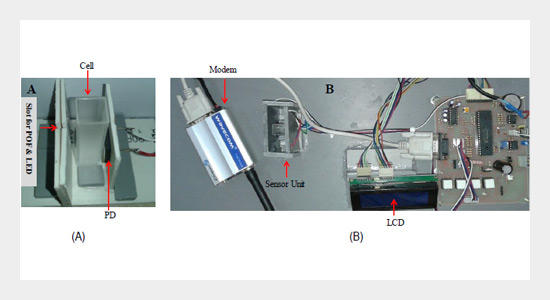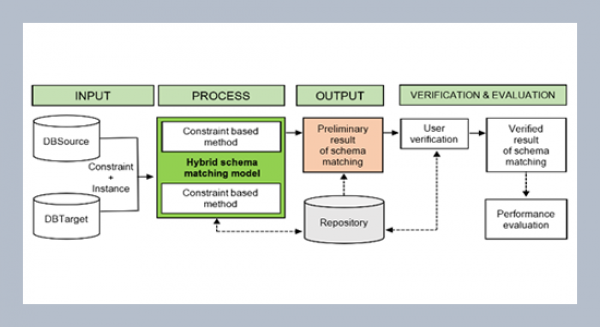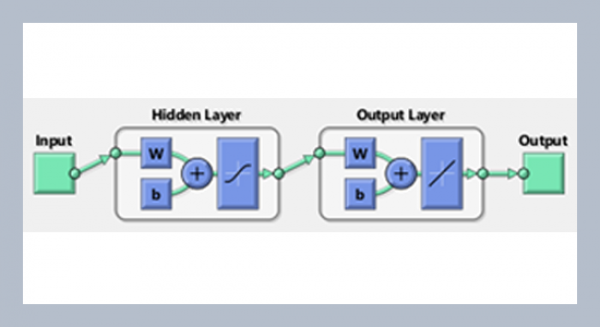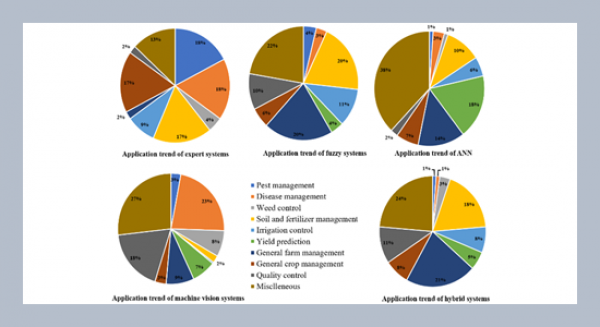Muhammad E. H. Chowdhurya*, Md Belayat Hossainb, Tamal Adhikaryc, Mir Toufikur Rahmand and Md. Abdur Razzaquec aDepartment of Electrical Engineering, Qatar University, Doha, Qatar
bDepartment of Electronic & Telecommunication Engineering, Atish Dipankar University of Science & Technology, Dhaka, Bangladesh
cDepartment of Computer Science & Engineering, University of Dhaka, Dhaka, Bangladesh
dDepartment of Electrical Engineering, University of Malaya, Kuala Lumpur, Malaysia
Download Citation:
|
Download PDF
Continuous cropping without adequate measurement and provisioning of soil nutrient may endanger the sustainability of agriculture. Soil nutrient measurement is greatly required for proper plant growth and effective fertilization. Existing methods of soil testing generally use visual comparison of soil solution colour with the colour-chart and this makes it subjective and error prone and time consuming whereas the spectrophotometer is very expensive and none of the approach suitable for remote analysis of soil macronutrients. On the other hand, the optical sensor could sensitively detect the soil solution colour changes thereby detecting soil nutrients in the sample without delay and subjective error. In this work, a compact optical sensor based on photometric detection of soil nutrients using high precision Photo Diode (PD) and Light Emitting Diode (LED) was developed. Real-time optical sensor using PIC microcontroller was integrated to a remote data collection server for the ease of acquisition and post-processing. The wavelength of LEDs is chosen to fit the absorption band of chemical reagents whose colour develops by reaction with soil nutrients. The sensor was used to detect three soil macronutrients: ammonia nitrogen (NH4-N), nitrate nitrogen (NO3-N), available phosphorus oxide (P2O5) from colour changes caused by addition of chemical reagent in a transparent plastic cell (5.5 mm path length). The resolution of 0.1-20 mg/100g was used as standard solution. The fifteen test samples were taken from different farmlands and ten soil samples were used to calibrate the optical sensor comparing with the result obtained by a colour chart laboratory judgement. The calibration factors obtained were then used to evaluate five unknown soil samples and the results were finally compared with laboratory results, and designed system showed good level of agreement with the laboratory results.ABSTRACT
Keywords:
Soil nutrient; macronutrients; ammonia nitrogen; nitrate nitrogen; phosphorus; LED.
Share this article with your colleagues
REFERENCES
ARTICLE INFORMATION
Received:
2015-05-01
Revised:
2016-03-29
Accepted:
2016-04-11
Available Online:
2016-07-01
Chowdhury, M.E.H., Hossain, Md.B., Adhikary, T., Rahman, M.T., Razzaque, Md.A. 2016. Remote analysis of soil macronutrients using optical sensor for precision agriculture. International Journal of Applied Science and Engineering, 14, 87–99. https://doi.org/10.6703/IJASE.2016.14(2).87
Cite this article:















